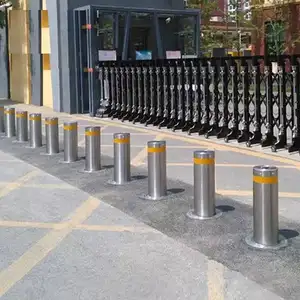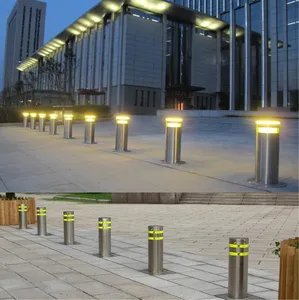
All categories
Featured selections
Trade Assurance
Buyer Central
Help Center
Get the app
Become a supplier

(14833 products available)












































Steel targets are used for different applications, including hunting and recreational shooting. They come in various types, such as:
Static steel targets
Static steel targets are designed for shooters to aim at and strike. These targets remain in a fixed position once set up. They can be used for long range and short range shooting practice. They come in many shapes and sizes, such as circular, rectangular, and silhouette targets. Static steel targets are further divided into:
Durable steel targets
Durable steel targets are made of strong and highly durable materials. They can withstand repeated bullet impacts without significant damage. Their construction allows shooters to use them for many years with minimal maintenance. This makes them a cost-effective option for shooting ranges and enthusiasts.
Standard steel targets
Standard steel targets are the most commonly used types. They are made of good quality steel that can handle bullet impacts. These targets are available in different sizes and shapes and are suitable for various shooting activities. They offer shooters an opportunity to practice their skills by providing a visible target to aim at.
Reactive steel targets
Reactive steel targets are designed to move or make a sound when hit by a bullet. They provide instant feedback to the shooter, indicating a successful hit. Reactive steel targets come in two main categories:
Self-resetting steel targets
Self-resetting steel targets are designed to return to their original position automatically after being hit. This allows shooters to continue firing without getting off to manually reset the targets. The self-resetting mechanism can be powered by gravity or springs.
Fall-down steel targets
Fall-down steel targets are mounted on a hinge or pivot. They fall forward when struck by a bullet. These targets are easy to reset and make for an engaging shooting experience.
Portable steel targets
Portable steel targets are lightweight and easy to transport. They can be set up quickly and taken down, making them ideal for mobile shooting ranges or field training. Most portable steel targets come with stands or bases that provide stability during use.
Steel targets are versatile tools used for various activities, including shooting sports, law enforcement training, military exercises, and even some industrial applications. Here are some detailed usage scenarios:
Shooting Sports
In shooting sports, participants use various target types, including reactive targets, which move or make a sound when hit, providing immediate feedback to the shooter. Steel target shooting has gained popularity due to its durability and the audible feedback it provides. Practical shooting competitions often use targets set at varying distances and angles to test competitors' speed, accuracy, and shooting technique.
Law Enforcement Training
Law enforcement agencies conduct firearms training exercises that involve scenario-based training with steel targets. These exercises simulate real-life situations where officers must engage multiple targets under time constraints. Officers may train for precision shooting in high-stress situations.
Military Training
The military conducts marksmanship training using various target types, including moving targets for small arms fire and stationary targets for long-range precision shooting. Steel targets are often utilized in close-quarters combat training where soldiers must engage targets quickly and accurately in confined spaces.
Hunting Practice
Hunters use steel targets to practice shooting at various distances and angles, simulating conditions they may encounter in the field. This target practice helps hunters improve their marksmanship skills, ensuring they can make accurate shots when hunting game. Some hunters practice shooting at targets that mimic the size and shape of the game they plan to hunt, allowing for more realistic preparation.
Archery Training
In archery, steel targets are used for training purposes. Archers can practice shooting at different distances, improving their accuracy and consistency. These targets are especially useful for training in field archery, where archers must shoot at targets placed at varying distances and angles in a natural terrain setting.
Corporate and Team-Building Events
Companies organize shooting events as part of corporate retreats or team-building exercises. Participants engage in friendly competitions, improving their shooting skills while enjoying a unique and challenging experience. These events often include expert instructors who guide participants through various shooting drills and competitions.
Personal Skill Development
Many individuals participate in shooting sports as a hobby. They set up steel targets in private shooting ranges to practice their marksmanship and improve their shooting techniques. Hobbyists enjoy the satisfaction of hitting targets and tracking their progress over time as they refine their shooting skills.
Survival and Self-Defense Training
Some training programs focus on survival skills and self-defense tactics, incorporating steel target shooting as part of the curriculum. Participants learn how to handle firearms effectively and defend themselves in high-pressure situations.
Choosing the correct steel shooting target involves considering performance, durability, and safety. Here are the main factors to consider when selecting a steel target:
Purpose
Determining the target's intended use is essential. Is it for law enforcement training, military practice, or recreational shooting? Different applications require different targets. For instance, precision shooting requires static paper targets, while dynamic shooting requires movable targets.
Durability
Durability is another critical factor. Steel targets are available in various grades. AR500 steel targets are highly durable and can withstand repeated bullet impacts. They are ideal for long-range shooting. On the other hand, AR400 steel targets are more affordable and suitable for short- to medium-range shooting.
Thickness
The thickness of the steel target is crucial for its longevity and safety. Thicker targets can withstand more powerful ammunition and have a longer lifespan. For example, 3/8" steel targets are commonly used for pistol shooting, while 1/2" or 3/4" targets are used for rifle shooting.
Shape
The shape of the steel target can also affect its performance. Circular targets are ideal for practicing marksmanship, while silhouette targets are great for tactical training. Steel gong targets are popular for long-range shooting as they provide audible feedback.
Mobility
If mobility is required, portable steel targets are a great option. They are easy to transport and set up, making them ideal for on-the-go training sessions.
Steel shooting targets serve various purposes, including training, competition, and recreational shooting. Their primary function is to provide a durable and interactive surface for shooters to aim at. When struck by a bullet, the target will mark an indentation or hole, showing the bullet's impact. Some targets are designed to move or fall when hit, providing an additional challenge and feedback for the shooter. Overall, steel targets are designed to withstand repeated gunfire, offering a long-lasting and engaging shooting experience.
Q1. How long do steel targets last?
A1. Steel targets lifespan varies depending on target grade, usage, and maintenance. Generally, high-grade steel targets have an average lifespan of 10 to 20 years. However, with proper maintenance and care, shooters can extend the lifespan of the targets. Also, the amount of usage and the type of bullets used on the target can affect its lifespan.
Q2. How to maintain and care for steel targets?
A2. Maintaining and caring for steel targets is very simple. After using the target, one should remove any splatter paint and target debris. Then, store the target in a dry place to prevent it from rusting. Also, users should regularly check the target for any signs of excessive damage.
Q3. Can someone use any bullet on a steel target?
A3. Not all bullets can be used on a steel target. It is because some bullets can cause the target to shatter or break. Always check the manufacturer's guidelines to see which bullets can be used on a steel target.
Q4. Are steel targets portable?
A4. It depends on the type of steel target. Most manufacturers make portable steel targets that can be easily moved around. The portable steel targets often have wheels, and shooters can easily set or adjust the targets.